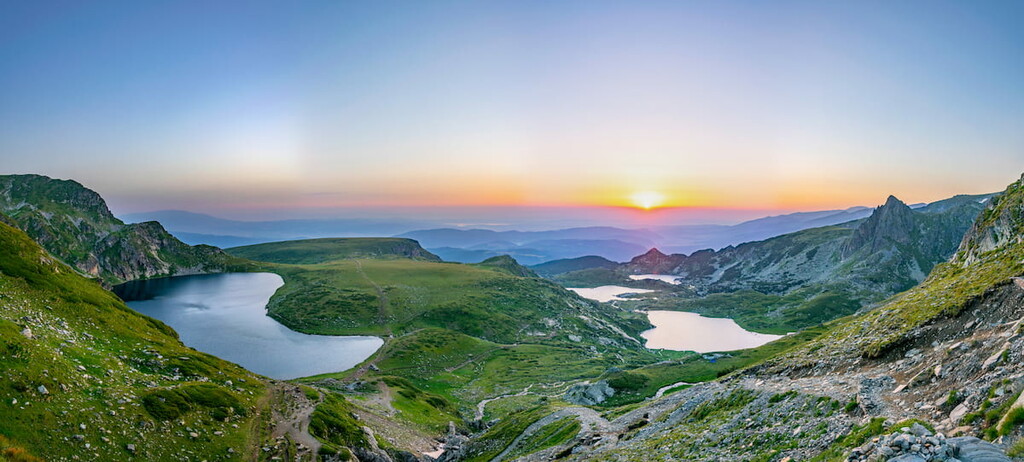Get PeakVisor App
Sign In
Search by GPS coordinates
- Latitude
- ° ' ''
- Longitude
- ° ' ''
- Units of Length

Yes
Cancel
Share ×

Scan the QR code and open PeakVisor on your phone
❤ Wishlist ×
Choose
Delete
Featuring a rich and diverse cultural heritage, Bulgaria is undeniably a unique nation. From the rugged Balkan Mountains to sandy Black Sea beaches and rich forests, there is no limit to the natural and historic wonders that can be found throughout its vast lands. Bulgaria contains 4950 named mountains, the highest and most prominent is Musala (2,926 m/9,600 ft).
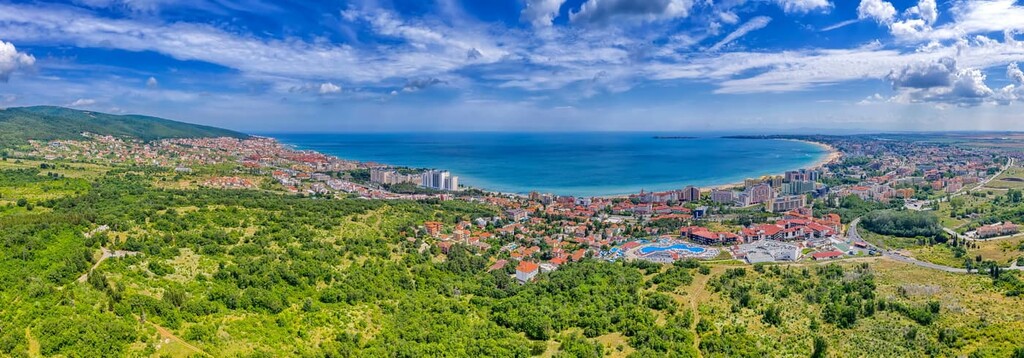
The country of Bulgaria (officially the Republic of Bulgaria/Република България) is located at the crossroads between Greece, the greater Balkan peninsula, the Black Sea, and Asia Minor.
With a total area of 110,993 square kilometers (42,854 sq. mi), Bulgaria is the sixteenth largest country in Europe after Romania, Belarus, Kazakhstan, and Greece. It is also the 103rd largest country in the world after Benin, Honduras, and Liberia.
Bulgaria rests on the southeastern portion of the Balkan Peninsula, with Romania to its north, Serbia to its northwest, North Macedonia to its southwest, Greece to its south, and Turkey to its southeast. To its east is the Black Sea, with two major gulfs at Varna in the north and Burgas in the south. In the Black Sea, Bulgaria controls several small islands and islets near its coast.
The northernmost coast of Bulgaria is sandy and flat, increasing in elevation and ruggedness as it moves southward down Cape Kaliakra. There, the Bulgarian coastline becomes studded with massive rocky cliffs. Moving even further south, the coastline becomes more heavily forested.
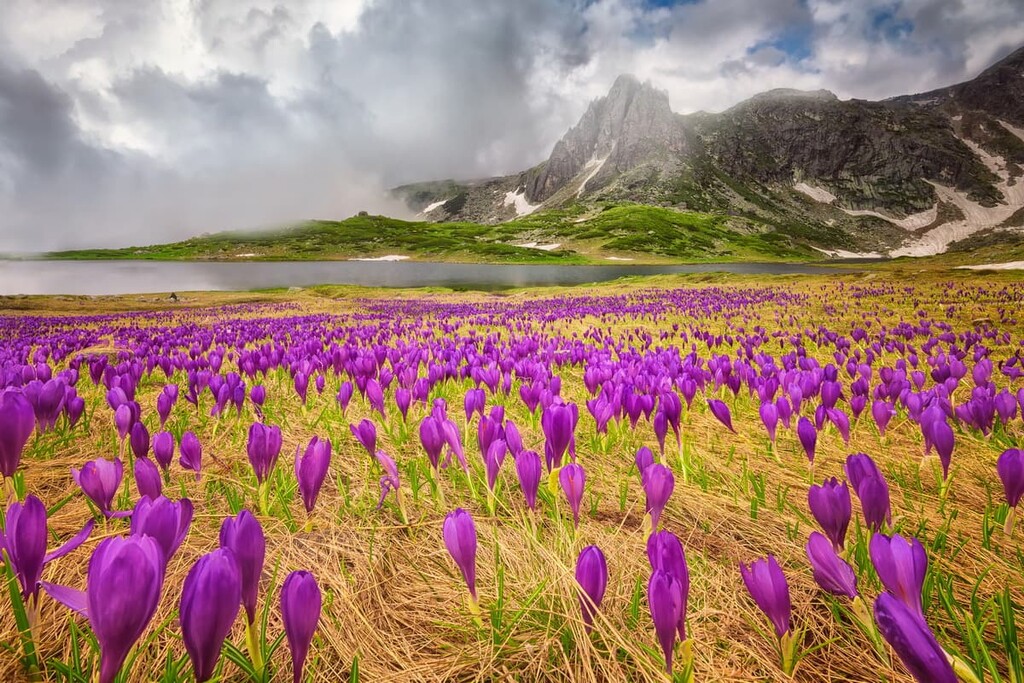
Northern Bulgaria also consists of the Danubian Plain, bordered by the Black Sea to the east, and the Timok River to the west, made up of fertile alluvial plains, rolling hills, and plateaus.
Most of the mountains in Bulgaria are located in eastern and central Bulgaria and are part of the Balkan Mountains, which stretch from the Timok valley in the west to Cape Emine in the east. The Zlatitsa and Vratnik passes separate the western, central, and eastern portions of the mountains, with the central portion boasting the highest typical elevations.
There is a transitional region between the aforementioned Balkan mountains and the following Rilo-Rhodope massif, where lush sub-Balkan valleys, mountains like the Vitosha, and the Thracian Plain can all be found. The Rilo-Rhodope massif includes many of Bulgaria’s most famous mountains and peaks, such as Musala, Vihren, and Ruen.
The hydrography of Bulgaria consists of a dense river system and hundreds of lakes and mineral springs. The most notable river is the Danube, which runs along Bulgaria’s northern border with Romania, and for which Bulgaria occupies almost 6 percent of its basin area. Numerous tributaries spring off from the Danube in Bulgaria, such as the Osam River, near Nikopol; the Yantra, near Svishtov; and the Iskar, near Sofia.
Rivers are most highly concentrated in Bulgaria’s mountainous regions, and they are more sparse in Bulgaria’s plains, especially in the northeast and parts of the south. Of the rivers that flow into the Black Sea, the longest is the Kamchiya. There are also many rivers that begin in Bulgaria and empty out in the Aegean instead, such as the Maritsa.

Though most of these rivers are considered to be relatively short and shallow, in a country with around 400 lakes and 225 mineral water springs, there is no lack of freshwater to be seen in Bulgaria.
Bulgaria is currently divided into 27 provinces (or oblasts), all named after their respective capital cities. It also contains one metropolitan capital province known as Sofia City, where, aptly, its capital of Sofia is located. These provinces are further divided into a total of 265 municipalities.
The largest city and province in Bulgaria is Sofia, in western Bulgaria, with around 1,300,00 residents. The second largest province is Plovdiv, in south-central Bulgaria, with a population of around 700,000, and the third is Varna, on the northeastern coast, with a population around 500,000. Plovdiv and Varna are also the second and third largest cities of Bulgaria, respectively.
Variations in elevation and the presence of the Black Sea result in a diversity of climates in Bulgaria. However, most of these climates are similar to a type of continental climate seen throughout the inland portions of the Balkans.
Generally, the climate of Bulgaria involves hot summers and cold winters, with moderate precipitation and abundant snow during the winter. There is still an undeniable Mediterranean influence, however, seen in the hot, arid weather that occurs in late summer.
To be more specific, Bulgaria is typically divided into five climatic zones: the continental zone, the transitional zone, the continental-Mediterranean zone, the Black Sea zone, and the alpine zone.
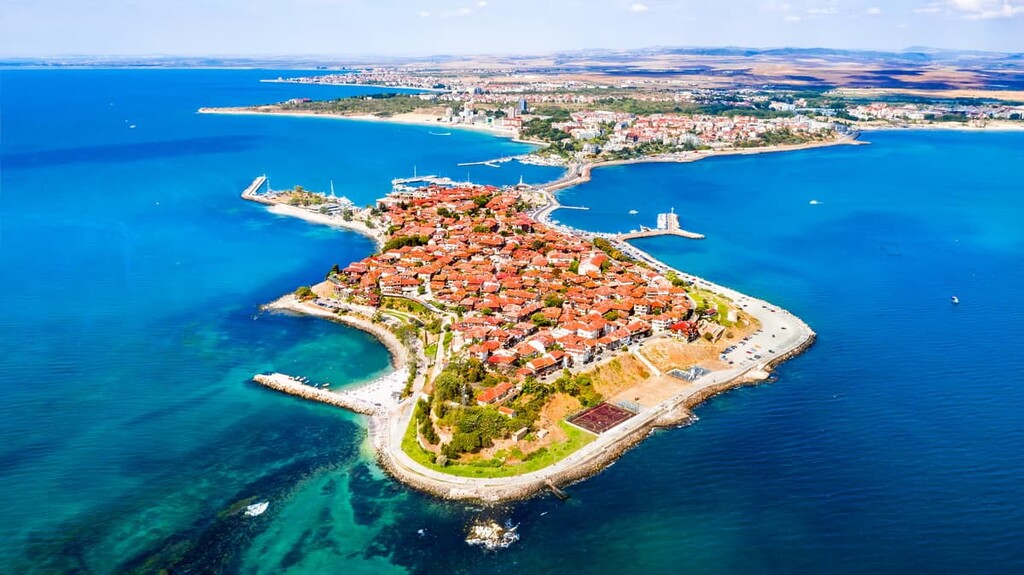
Since the Black Sea is too small to produce an overwhelming effect on Bulgaria’s climate, its influence is mainly found along the coast, around 30 to 40 km (18.6 to 24.8 mi) inland.
The geology of Bulgaria primarily consists of several main morphotectonic forms, three of which span the country from east to west: the Moesian platform, the Balkan mountains, and the Rhodope massif. The other main form is the Kraishtide zone, which leads northwest out of Bulgaria.

The Moesian platform, stretching across northern Bulgaria and southern Romania, harkens back to the Hercynian (or Variscan) orogeny. This orogeny was the result of a Late Paleozoic continental collision between Euramerica and Gondwana that, in turn, formed Pangaea and a subsequent major mountain-building event.
Today, the Moesian platform’s mantle consists of carbonates and other sedimentary rocks that date back to the Mesozoic and early Cenozoic eras, much of which has been covered by Quaternary sediments in and around the Danube Valley. There are also minor amounts of oil and gas and a thick foredeep in the southernmost part of the platform full of flysch-like sediments.
The Balkan Mountains make up a 10 to 20 km (6.2 to 12.4 mi) zone below the Moesian platform and above the Rhodope massif, composed of folded metamorphosed Paleozoic sediments.
Since the Miocene, the mountains have undergone 3 to 4 km (1.8 to 2.5 mi) of uplift. This uplift was to the aforementioned Hercynian orogeny and the Alpine orogeny of the Late Mesozoic, the latter of which was responsible for the formation of many mountain ranges throughout Europe, including the Alps.
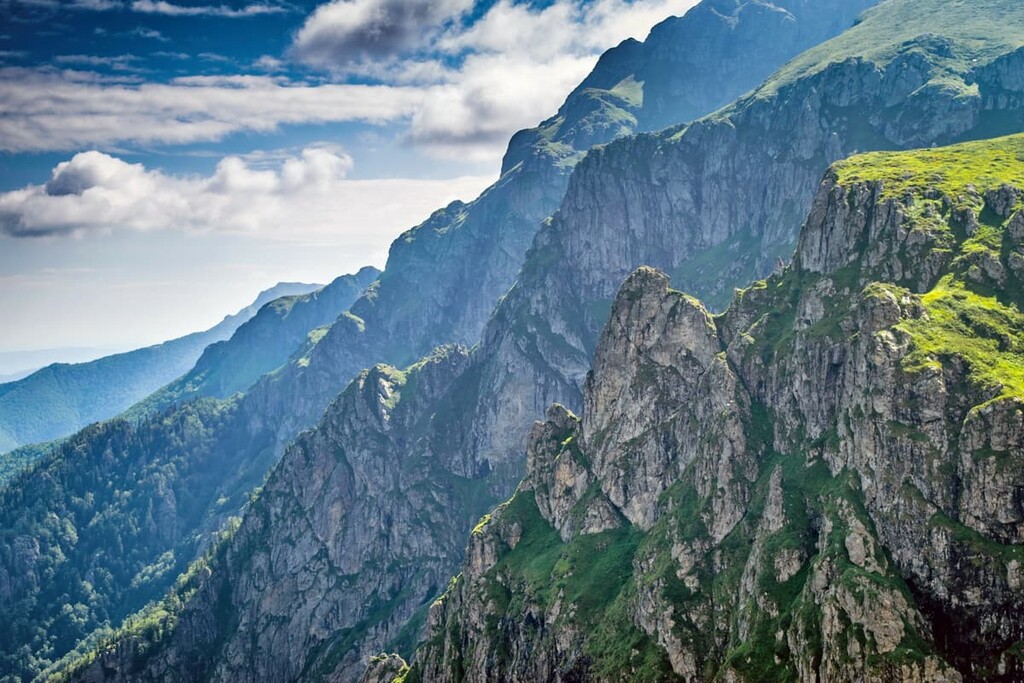
Stretching across southern Bulgaria and northern Greece is the Rhodope massif, a series of mountains consisting mainly of Precambrian and early Paleozoic crystalline rocks, with Cenozoic sediments and volcanic rocks accumulating in various faulted basins.
The Rhodope massif is also notable for its large swaths of karst topography and the deep gorges that coexist with them, such as the impressive marble canyon of Trigrad Gorge.
Proterozoic marble, gneiss, and amphibolite can be found in the Rhode Massif. Additionally, southern Bulgaria is home to Archean rocks such as migmatite, anatexite, and granite.
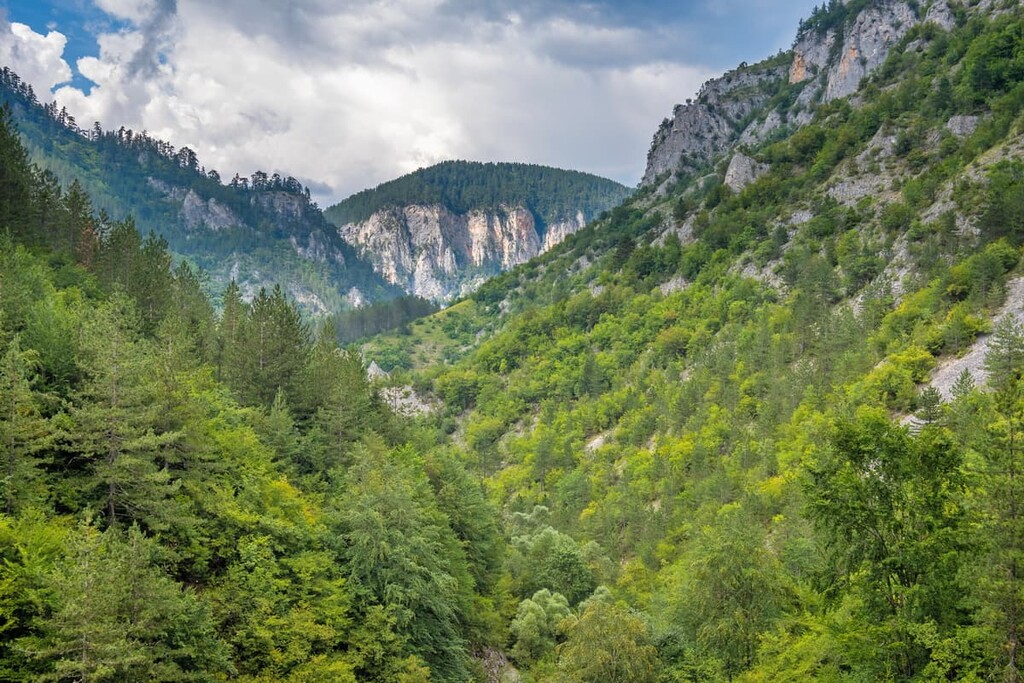
The Kraishtide zone is a rugged megashear fault with movement documented from the Paleozoic. This zone is representative of a fault system that spans throughout the country. It is approximately 15 to 60 km (9 to 37 mi) wide and it travels in a northwestern direction from western Bulgaria into Serbia.
Bulgaria is considered to be one of the most biodiverse countries in Europe as it houses a large variety of flora and fauna. To protect and conserve this biodiversity, the country has 3 national parks, 11 nature parks, 10 biosphere reserves, and over 500 protected environmental areas.
Over a third of all mammals of Europe can be found in Bulgaria, with some of the most common throughout the country being the golden jackal, wild boar, roe deer, red deer, gray wolf, European badger, red fox, and beech marten. For birds, the partridge is one of the most ubiquitous species.
There are a number of different ecoregions found in Bulgaria, each of which contains its own unique mix of flora and fauna. Here’s a quick look at some of the major ecoregions in the country.
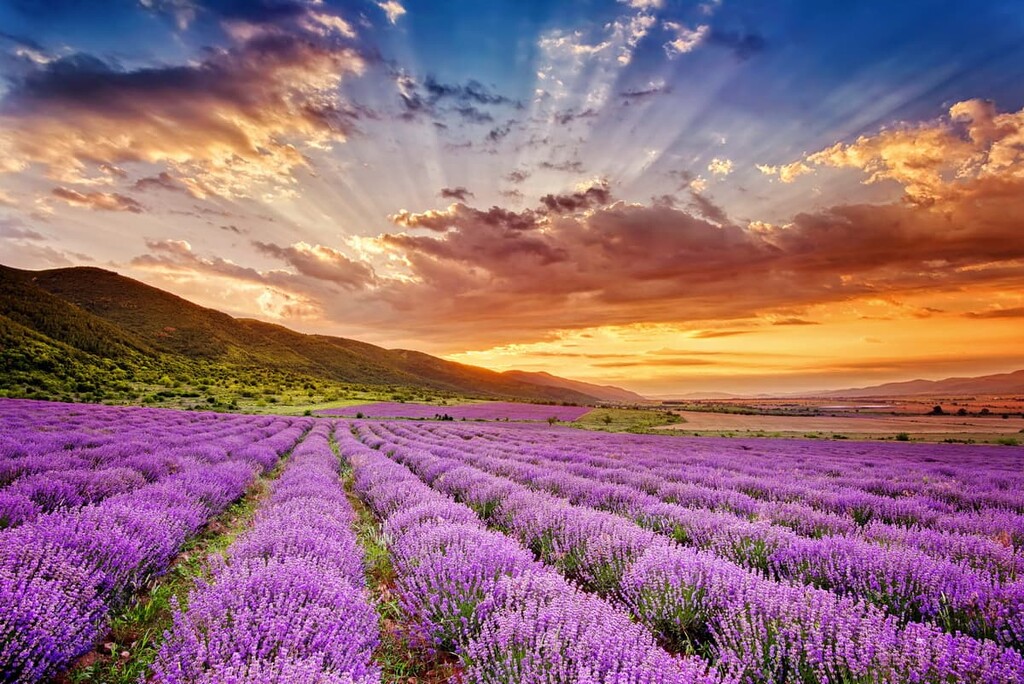
The southwestern corner of Bulgaria is home to the Aegean and western Turkey sclerophyllous and mixed forests, an ecoregion of the Mediterranean forest, woodland, and scrub biome.
Low shrublands of aromatic shrubs and herbs like conehead thyme, horehound, and Cistus make up this forced landscape. Other notable plant communities include woody maquis shrublands of strawberry, sweet bay, carob, and olive trees and woodlands of Kermes oak, Turkish pine, and holm oak..
Typically, Balkan mixed forests are located at lower elevations than adjoining Rhodope montane mixed forests. They cover a wider spread of Bulgaria, especially in the central, east, and northern portions of the country.
These forests are dominated by deciduous oaks like the Hungarian oak, downy oak, and Turkey oak, as well as conifers such as the Macedonian pine, Scots pine, Bosnian pine, beech, hornbeam, silver fir, and Norway spruce.
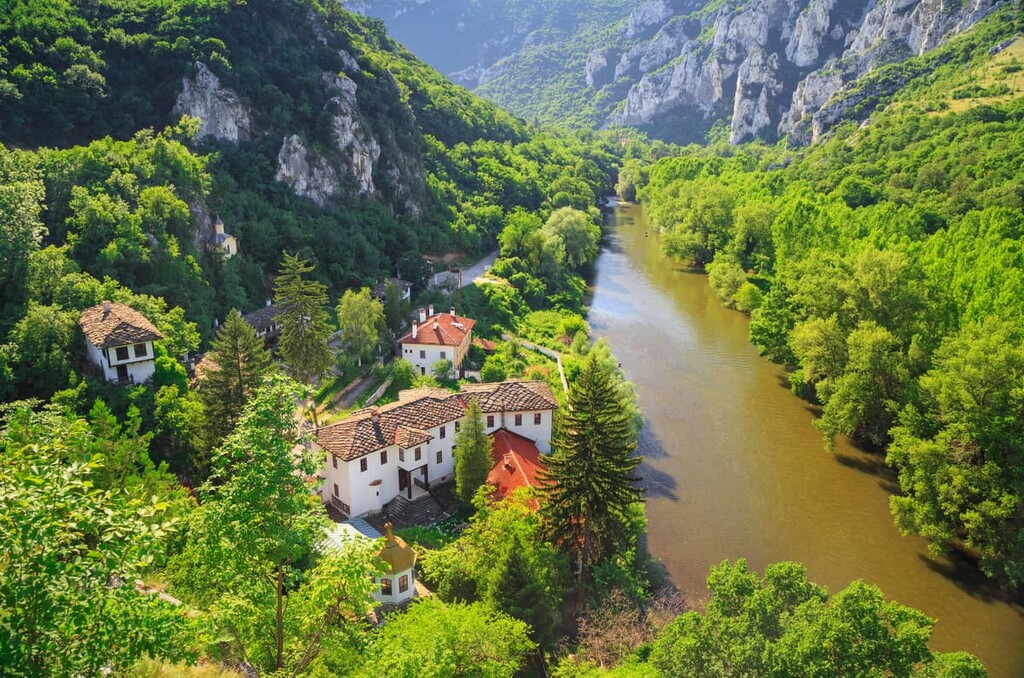
These forests are typically interspersed among woodland pastures, grasslands, and shrublands known as shibylak. Given their high rate of biodiversity, many of the country’s fauna can be found in the Balkan mixed forests.
In northeastern Bulgaria, surrounding the Pontic-Caspian steppe, is the East European forest steppe.
This ecoregion is a collection of broadleaf forests and grasslands that stretches over rolling hills, lowlands and plains. Some of the grasses and shrubs include Caragana frutex, European dwarf cherries, and blackthorns. Trees in this ecoregion include European oak, small-leaved lime, and Norway maple.
Whereas the Pontic-Caspian steppe occupies only the northeasternmost part of Bulgaria, the Euxine-Colchic deciduous forests occupy only the southeasternmost, right along the Black Sea. It is a temperate broadleaf and mixed forest ecoregion with two distinct subdivisions, the Colchian and Euxinic forests, of which Bulgaria has only the latter.
The Euxinic forest is the drier of the two, with an average of 1,000 to 1,500 mm (39 to 59 in) of precipitation a year. Temperate rainforests, peatlands, coastal sand dunes, and coastal bottomland forests make up a mosaic of ecosystems in the Euxinic forest, which are famously well-inhabited and visited by waterfowl and raptors.

Egyptian vultures, Eurasian eagle owls, white and black storks, and numerous eagle species inhabit the Bulgarian Euxinic forest. The forests are also home to smaller birds like the white-backed woodpecker, olive-tree warbler, and sombre tit.
Strandzha Nature Park is the heart of the Euxinic forest in Bulgaria, featuring oak forests with thick sclerophyllous (hard-leaved) shrubs underneath like the Rose of Sharon, green olive tree, tree heath, and butcher’s-broom. On the coast, this turns into relatively hot, dry grasslands marked by grasses like the yellow bluestem and bulbous bluegrass.
Meanwhile, black alders, white willows, and crack willows line the rivers, and typical Balkan deciduous species make up much of the rest, alongside some other notable species such as the Strandzhan oak and Black Sea holly. With 56 endemic plant species, some of which especially endemic to the specific region, this region is an area of great floral diversity.
Besides the common Bulgarian species that can be found in this region, the area is notable for housing particularly large populations of wildcats and European otters. It is also home to over 20 bat species, such as Kuhl’s pipistrelle and Bechstein’s bat. Günther’s vole, European ground squirrels, and Roach’s mouse-tailed dormouse are some of the nearly 3 dozen smaller mammals in this ecoregion.
As for reptiles and amphibians, these include Aesculapian snakes, Pallas’ glass lizards, Kotschy’s gecko, Balkan pond turtles, eastern spadefoots, and southern crested newt, as a small sample of the several dozen recorded around the park.
Finally, the region is notable for the presence of around 40 freshwater and 70 marine fish species. This includes the endemic Bulgarian minnow and Black Sea bleak, and others like the round goby, toad goby, and estuarine perch.
The Pontic-Caspian steppe occurs solely in the northeastern corner of Bulgaria, belonging to the temperate grasslands, savannas, and shrublands biome. This steppe is characterized by its hilly lowlands and mixture of herbs and grasses.
One of the major ecosystems of Bulgaria is the Rhodope montane mixed forests. This is a temperate broadleaf and mixed forest ecoregion that spans high altitudes of the many of central, western, and southern Bulgaria’s mountains, such as the Balkan, Rhodope, Pirin, Rila, Vitosha, and Ograzden mountains.
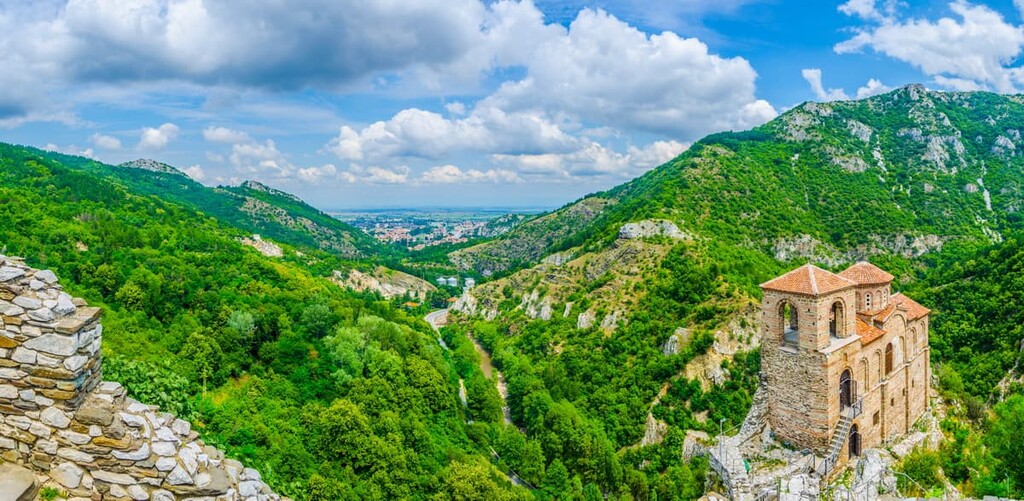
At lower elevations of Rhodope montane mixed forests, there are deciduous forests populated by Oriental and European hornbeams, European beeches, and various species of oak; at high elevations are coniferous forests of Macedonian, Bosnian, and Scots pine, Bulgarian and silver fir, Norway spruce, and other conifers. The higher elevations are mainly alpine shrubland and tundra.
These forests house many notable mammal species, including endangered species like the brown bear, European otter, wildcat, chamois, gray wolf, and European pine marten.
Additionally, these forests contain more common species like the roe deer, wild boars, and foxes, the latter of which can be found nearly ubiquitously throughout Bulgaria. They are also home to birds of prey such as the Eastern imperial eagle, griffon vulture, and cinereous vulture.
Central Balkan National Park, located at fairly high elevations among the central Balkan mountains, epitomizes the Rodope ecosystem, with forests of hornbeam, durmast oak, spruce, and fir.
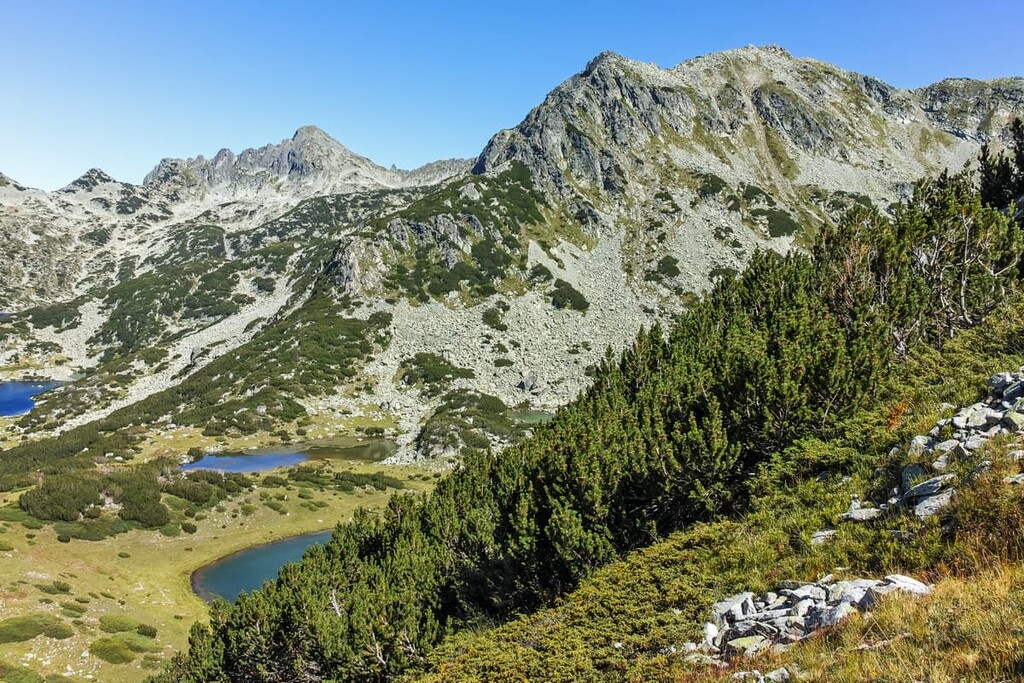
Pirin National Park, another example of Rhodope montane mixed forests, has notable populations of Balkan chamois, European pine marten, brown bear, gray wolves, and many other typical Bulgarian species. It is also home to over 150 bird species, including boreal owls, Eurasian three-toed woodpeckers, and white-backed woodpeckers.
Erhard’s wall lizards, common European vipers, marsh frogs, fire salamanders, smooth snakes, and agile frogs are some of the amphibians and reptiles that inhabit the park.
The inhabitation and settlement of Bulgaria has been on-going since the Stone Age, with permanent or semi-permanent settlement dating back to 6000 BCE and signs of advanced civilization dating back to 5000 BCE.
The ancient town of Solnitsata, which peaked in the middle of the fourth millennium, is regarded by some as the oldest town in Europe, though this is a difficult statement to prove.
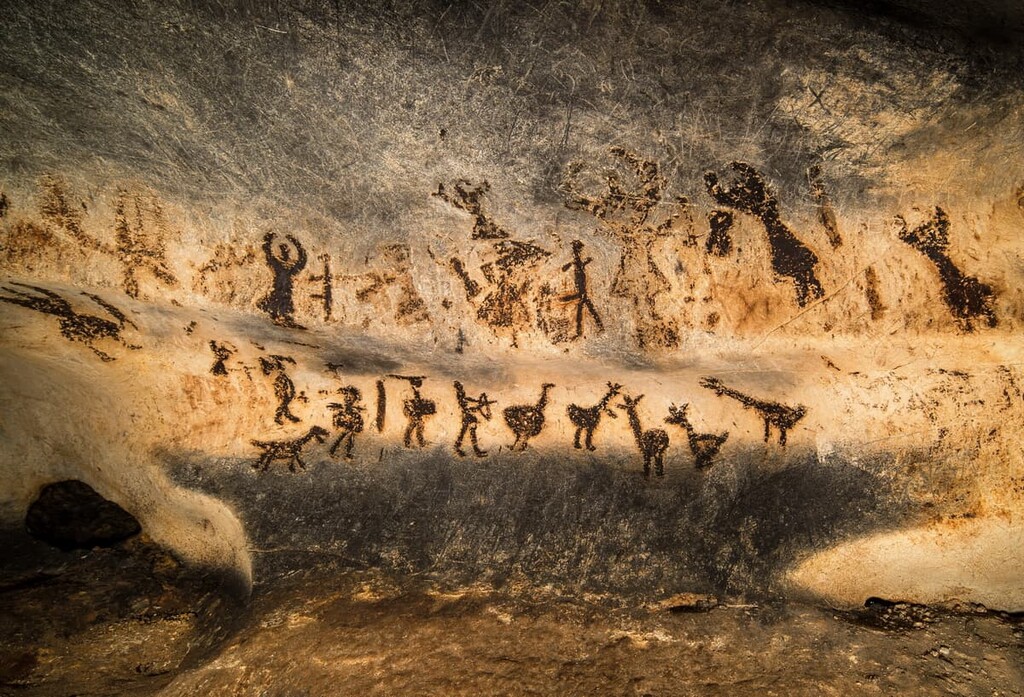
The aforementioned advanced civilization is known as the Varna culture, whose necropolis is one of the finds that attests to the existence of these various Stone Age peoples, alongside others like the Magura cave drawings and Neolithic mounds found around Stara Zagora.
Stara Zagora is located in a historical region known as Thrace, which spans central and southern Bulgaria, northeastern Greece, and northwestern Turkey. Thrace takes its name from the Indo-European-speaking Thracians who occupied a swath of the Balkans, including large parts of modern Bulgaria beginning around 3500 BCE.
The Thracians remained in this region for quite some time, mostly as a rather loose polity believed to consist of small, fortified hilltop villages (but was nonetheless incredibly rich in culture, especially with regards to poetry and music), with Greek colonies beginning to appear in Thrace around the eighth century BCE.
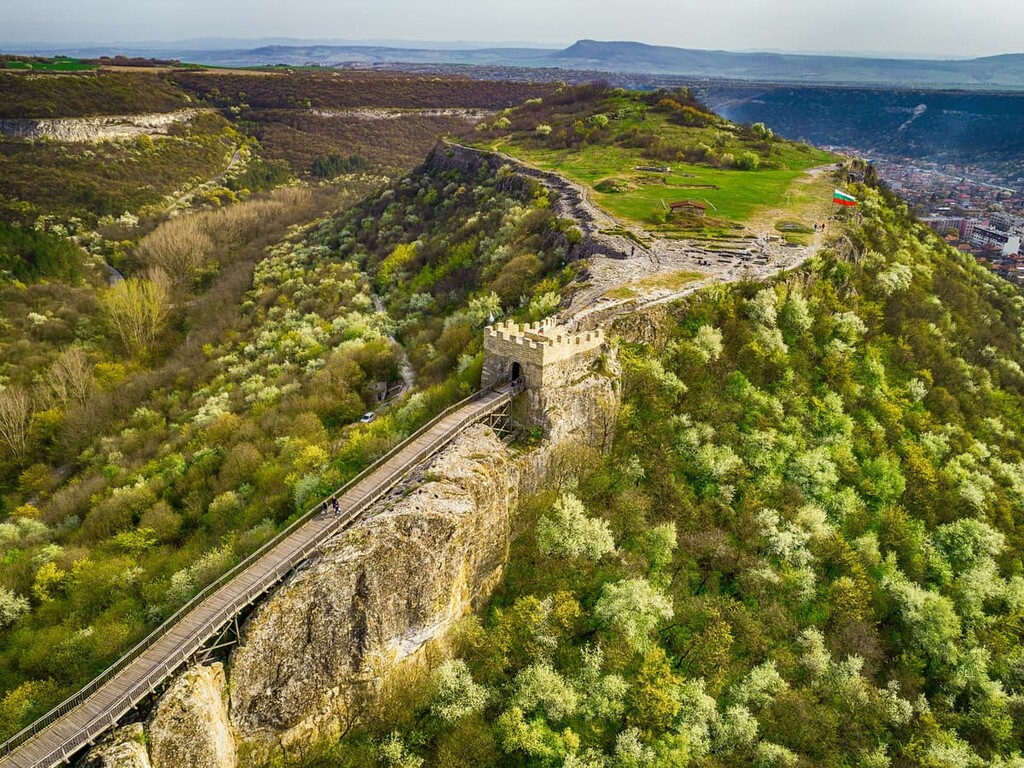
In the sixth century BCE, the Thracians were conquered and subjugated by the ever-growing Persians, largely under the hand of Darius the Great.
Despite this subjugation, in Bulgaria, the Thracians had become unified under the Odrysian Kingdom, with its capital Seuthopolis located near what is now Stara Zagora. The Odrysian Kingdom allied with the Athenians during the Peloponnesian War, though the Thracians and Athenians had their own disputes at other times.
Bulgarian Thrace became incorporated into the Roman Empire in the first century CE. This era was marked by an explosion of Roman-style towns, theaters, stadiums, and other Roman monuments.
The Thracians began to take on an interesting identity that combined older pagan beliefs and traditions with newer Roman-influenced Christianity, and thus the Thraco-Romans became a predominant people in Bulgaria.
As the Roman Empire collapsed and Bulgaria became incorporated into the Byzantine Empire, the region was invaded by a variety of peoples, including the Goths, the Huns, and the Pannonian Avars, precipitating the arrival of Slavs shortly after, around the sixth century CE. With the Slavs came a new Slavic identity marked by elements of Hellenism, Romanism, and Gothicism.
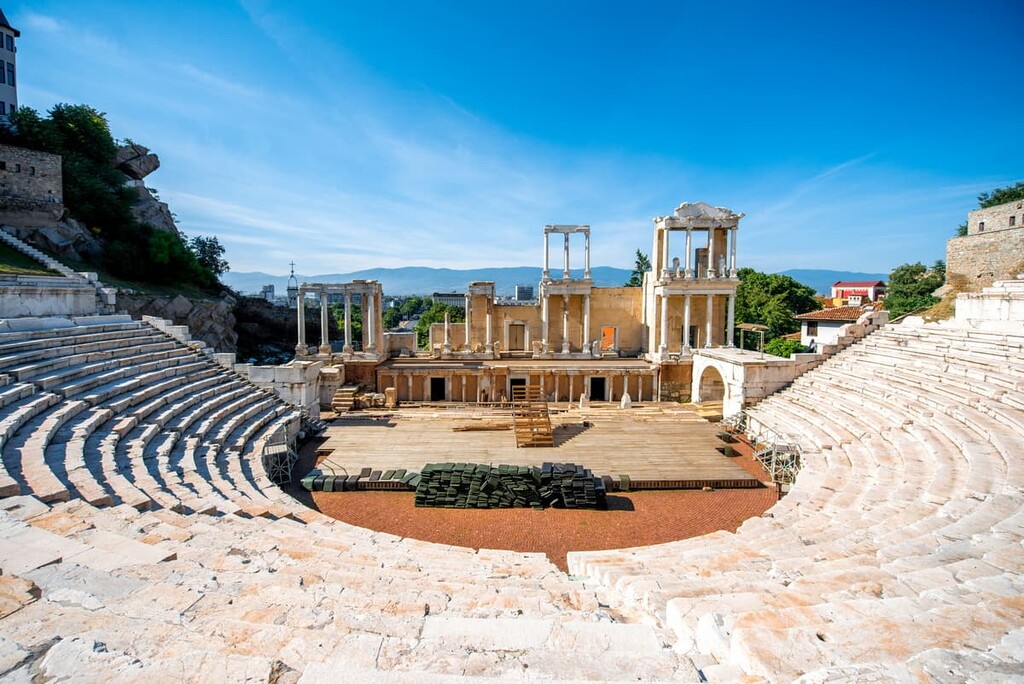
The name “Bulgaria” lends itself to the Turkic Bulgar people who invaded shortly after the arrival of the Slavs. They eventually signed a peace treaty in 681 CE with the Byzantine Empire to form the First Bulgarian Empire.
Under ruler Boris I, who reigned in the second half of the 800s CE, paganism was abolished and Eastern Orthodox Christianity promoted to the forefront. Meanwhile, the Cyrillic alphabet began to be adopted for many regional languages.
The cultures of the Slavs and Bulgars slowly intermingled, and around this time, the people of Bulgaria began to speak a common Slavic language, now known as an old form of Bulgarian.
Though Bulgaria saw a golden age of expansion under the rule of Simeon I, his death saw a gradual weakening of the state till it was fully conquered by the Byzantines in the 1000s.

This was followed by a Second Bulgarian after rebellions and military defeats debilitated the Byzantine stronghold over the land; eventually, this would lead to an over 400-year period under Ottoman rule.
The late 1800s provided a refreshed and powerful national consciousness in a period known as the National Awakening of Bulgaria. This spurred rebellions, like the 1876 April Uprising. It later led to the Russo-Turkish War of 1877-78, which caused the Ottomans to lose their control over Bulgaria. Thus, the Third Bulgarian state–and, evidently, the current Bulgarian state–was formed.
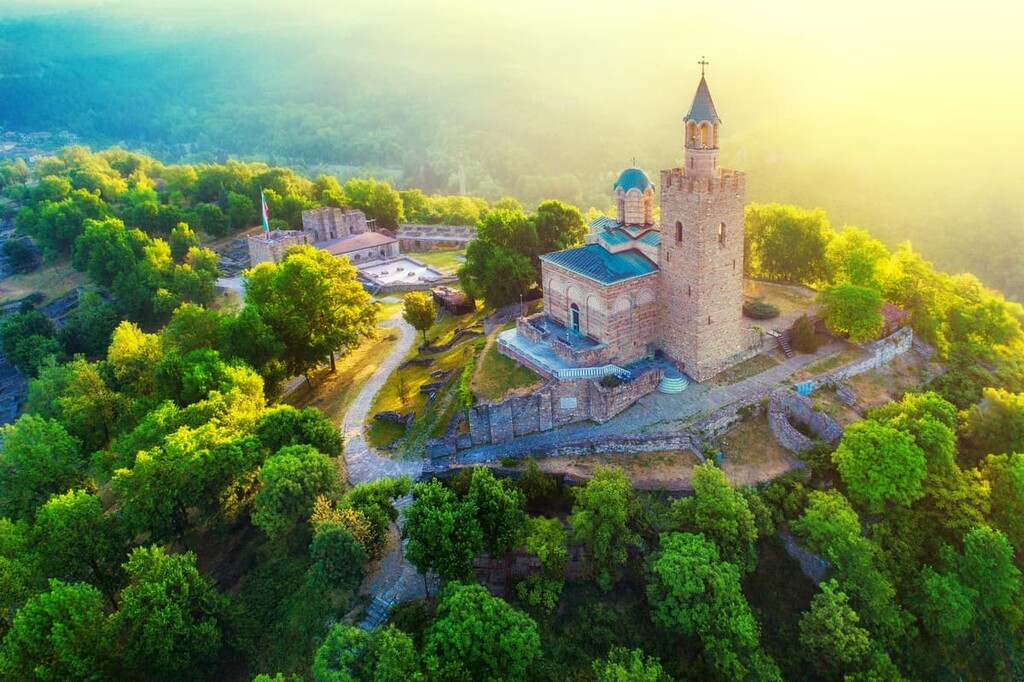
The Balkan Wars and World Wars of the twentieth century were difficult for Bulgaria in terms of the widespread human, territorial, and financial loss that the country suffered. The country was under a royal authoritarian dictatorship in the first half of the century, and a communist government in much of the latter half of the 1900s.
In the twenty-first century, Bulgaria has seen great improvements in its economy and political circumstances. Although tourism in Bulgaria isn’t as big of an industry as it is in western Europe, the country’s affordable cost of living and stunning landscapes set it up for success as a popular tourist destination in the near future.
Bulgaria is home to 3 national parks, 11 nature parks, and 55 nature reserves, in which there are endless opportunities for hiking, trekking, and mountaineering. Many of these protected areas are located among the peaks and gorges of the Balkan Mountains, though they can be found in various ecosystems throughout the country.
Generally, it is not necessary to hire guides in order to explore Bulgaria. But doing so is often highly recommended in order to complete some of the country’s most challenging and famous hikes.
Fittingly, the massive expanse of Central Balkan National Park is located near the center of Bulgaria, not far from Sofia. It occupies some of the most extreme and stunning portions of the Balkan Mountains.

Thick and well-aged beech forests, a diverse and highly endemic community of flora and fauna, alpine pastures, rugged mountain sides, pristine waterfalls, and dramatic gorges all comprise the beauty that Central Balkan National Park holds.
In fact, the park is home to Bulgaria’s highest waterfall, the Raiskoto Praskalo, which is a popular hiking destination for visitors. One of the park’s chalets, the Ray Chalet, is located at its base, for extra convenience. There’s also a chalet at Kozya Stena Peak, another great hiking site, part of a stretch of the Balkan Mountains that divides Bulgaria in two.
There are over two dozen of these chalets scattered throughout the most stunning parts of the park. There are trails running between each of the chalets, making them perfect for hiking along the scenic mountain ridge and exploring all that the park has to offer.
In the southwestern corner of Bulgaria is Pirin National Park, home to Bulgaria’s second highest peak of Vihren and over 100 glacial lakes (and even a few glaciers). The park is also home to the oldest tree of Bulgaria, a 1,300-year-old Bosnian pine known as Baikushev’s pine (Байкушевата мура).
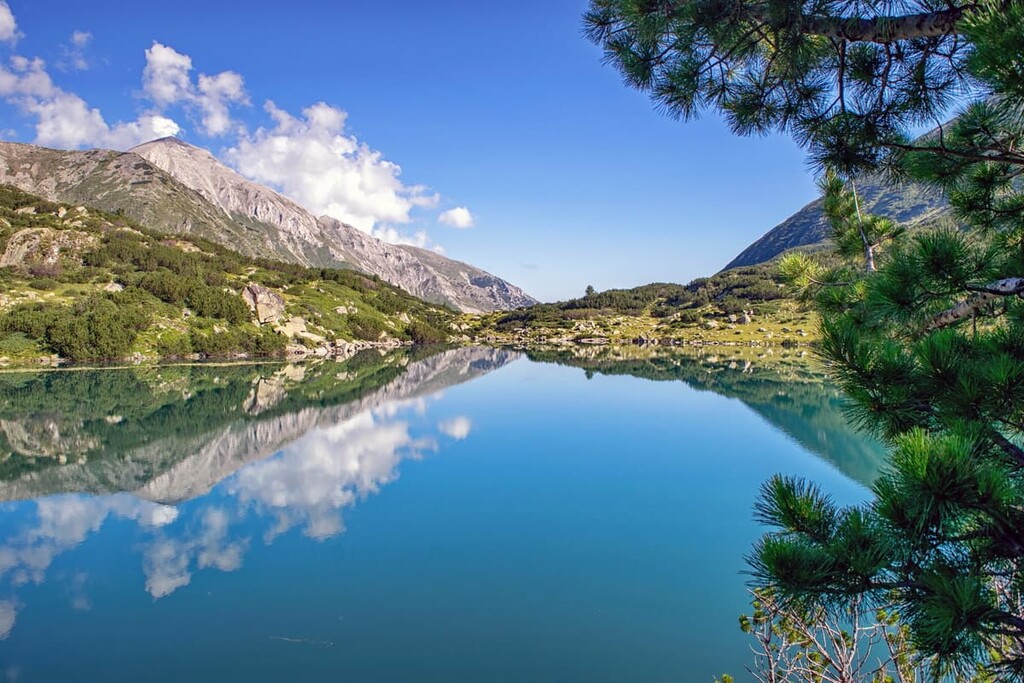
Twenty marked hiking trails allow for thorough exploration of the park, with the Koncheto Ridge trail being one of the most difficult, hiking along the 2,800 m (9,186 ft) tall ridge.
The steepness, narrowness, and ever-changing weather make guides highly recommend for the trail, but for a lighter hike, one can venture to Bezbog Peak and Bezbog Lake, which is beautiful either under the green of the warm months or the snow blankets of winter. Bezbog Hut is also located near the peak.
Located slightly less southwest than Pirin, Rila National Park is the largest national park of Bulgaria and perhaps the country’s most esteemed hiking destination. It is known for its many glacial lakes, riverbeds, and heights–including Musala Peak, the highest summit in the Balkan peninsula.
Depending on where one chooses to climb, hiking Musala ranges from a brisk hike or an all-day journey. Either way, it presents one of the most thrilling and gorgeous hikes in the entire country.
Another famous peak to hike in Rila is Malyovitsa, the site of the first organized mountaineering expeditions in Bulgaria, which is also notable for the monastery in its foothills. For those who wish to explore the available rock climbing routes, this hike can take up to a few days.
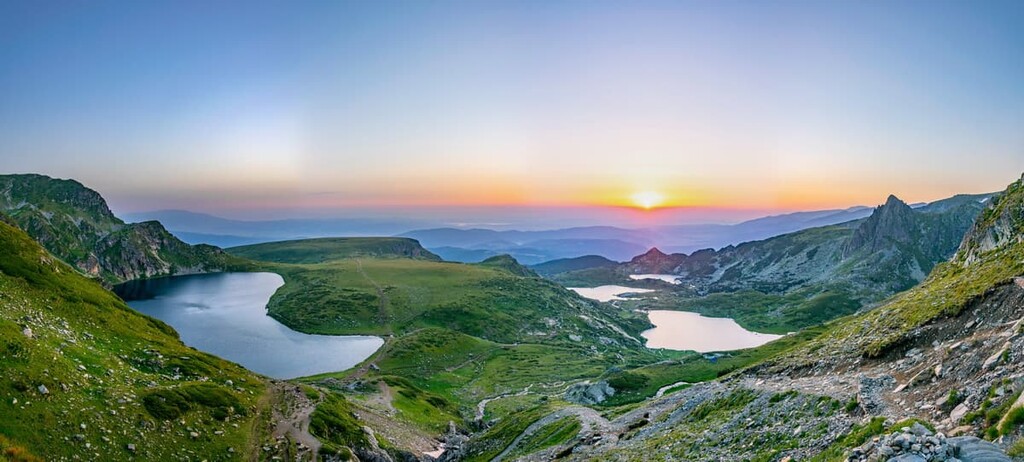
As for the glacial lakes, the Seven Rila Lakes hike, a journey that can range from a few hours to all day, showcases a sequence of some of Rila’s most wonderful and crystalline lakes, with a chalet not far away. These are some of the most notable hikes in the park, but are by no means the extent of them.
At Strandzha Nature Park, rolling green hills largely take the place of rugged mountains in the pocket of southeastern Bulgaria, alongside thick deciduous and old-growth forests, and archaeological traces of human habitation that harken back millennia.
Though beautiful in its own right, Strandzha does not harbor the same dramatic elevations as its companions in the Balkan Mountains, with its trails generally being less taxing to hike.
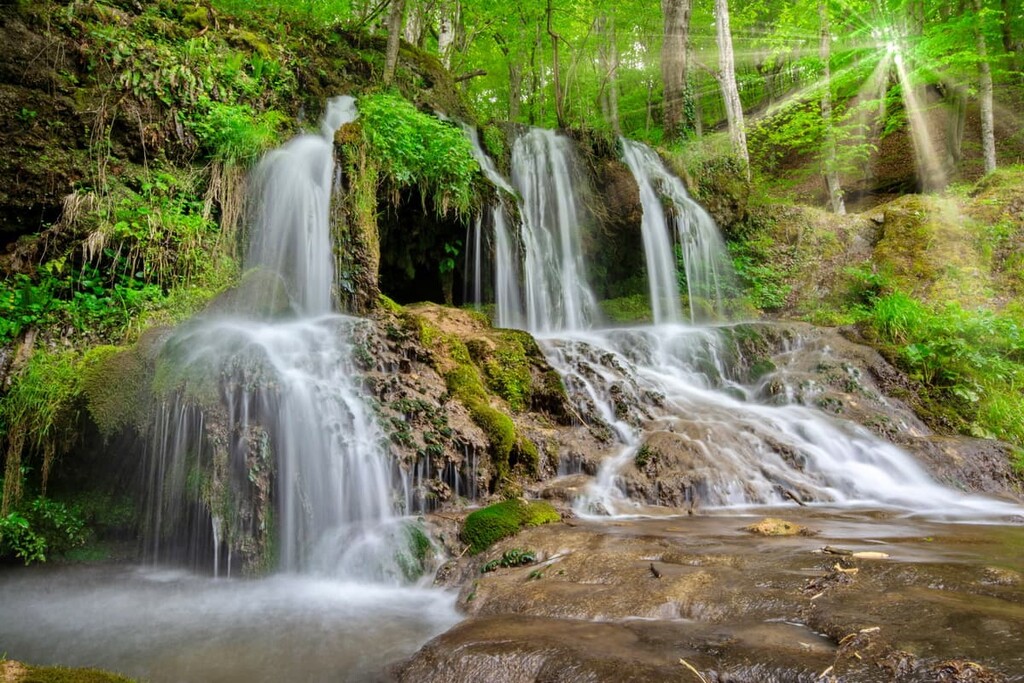
However, these trails are especially rewarding for those with an interest in the flora and fauna of the area. Eco trails like the Marina River, Veleka River, or Bulgarian Colchis offer some of the best ways to view the park.
Vitosha Nature Park is the closest destination for hiking and alpine activity near the city of Sofia, with the Vitosha Mountain’s iconic two-pronged silhouette forever looming over the city.
The park hosts forests, deep caverns, stone runs, and waterfalls, making it clear why the location became the first nature park of the Balkans, as well as the site of one of the most popular climbs in the country.
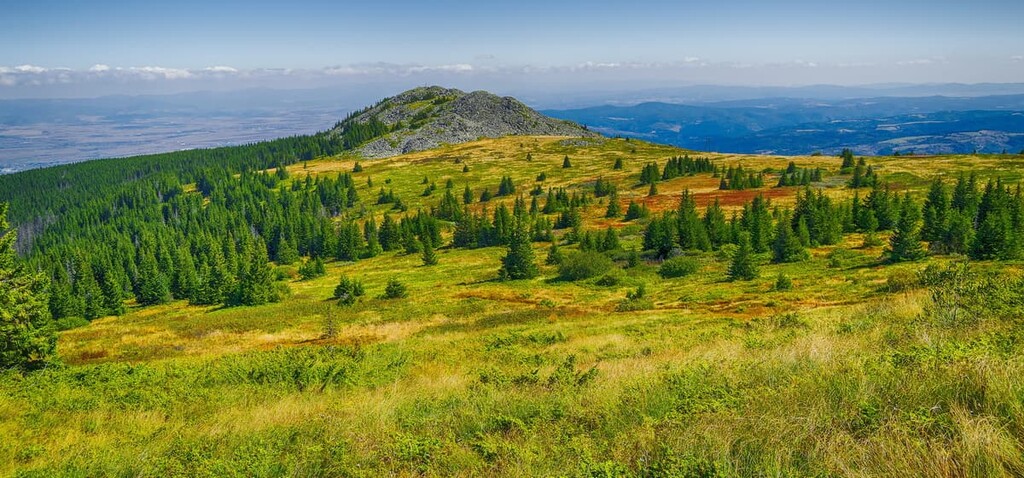
There are many notable trails within the park, especially those up to Cherni Vrah, Vitosha’s summit, around 2,290 m (7,500 ft) in height. This hike can be done from the mountain base, or one could take a gondola to move further up the mountain before hiking, depending on the level of difficulty and duration one desires. Along the way, there are green and gold alpine plains, often made extra colorful by the presence of beautiful flowers.
It is also common for hikes to begin from the various villages that surround Vitosha, such as Dragalevtsi, Boyana, or Yarlovo. Having been established for so long, trails in the park are typically plentiful and well-marked.
Outside the aforementioned destinations, Bulgaria is home to around a dozen more nature parks, as well as far more nature reserves. Some notable locations include:
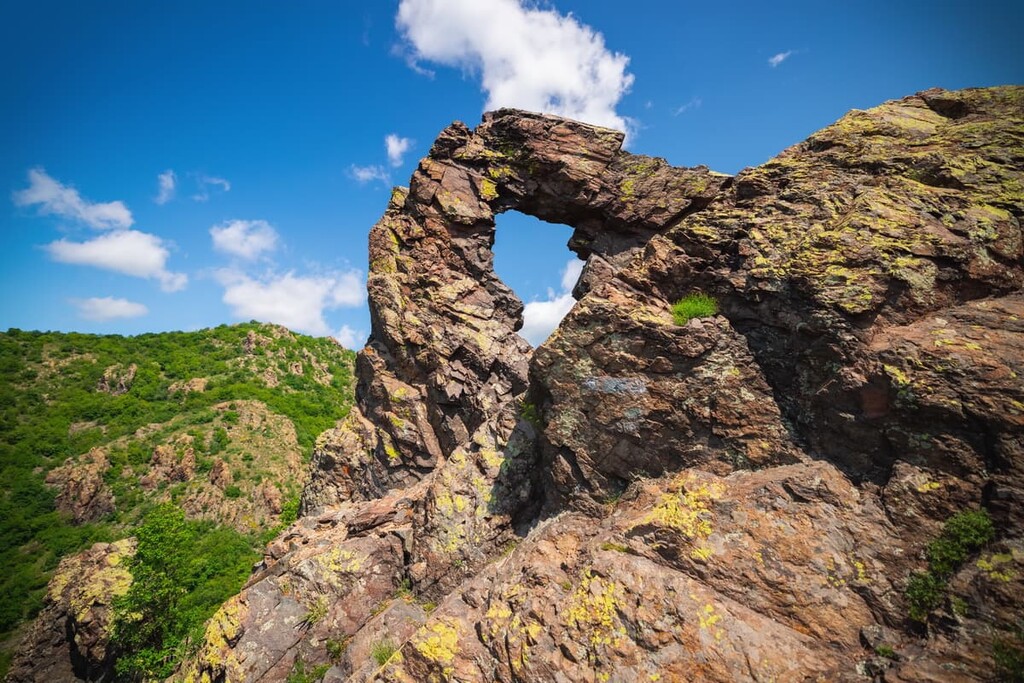
Throughout Bulgaria are scattered cities of great cultural, historical, and recreational value, many of which are at a decent size of over 100,000 inhabitants. These cities can be found lying on Bulgaria’s Black Sea coast or nestled within the dramatic peaks of the Balkan mountains, and of these cities, Sofia and Plovdiv are perhaps two of the most significant.
Easily the most well-known city of Bulgaria, as well as its capital and largest city at around 1,500,000 people, Sofia is an exciting and diverse city with a long and rich history. This history shows itself in Sofia’s architectural diversity, ranging from decadent Neo-Byzantine to ascetic Soviet brutalism, Moorish religious architecture, Vienna Secession, baroque, Neo-Gothic, and everything in between.
Alongside religious sites, museums, theaters, archaeological sites, and monuments, the natural sights of Sofia are also impressive, with an extensive green belt system of parks and gardens like the Borisova Gradina and Doctors’ Garden. From Vitosha Boulevard, one of Sofia’s biggest commercial destinations with cafés and restaurants and boutiques, one can see beautiful views of the nearby Vitosha Nature Park.
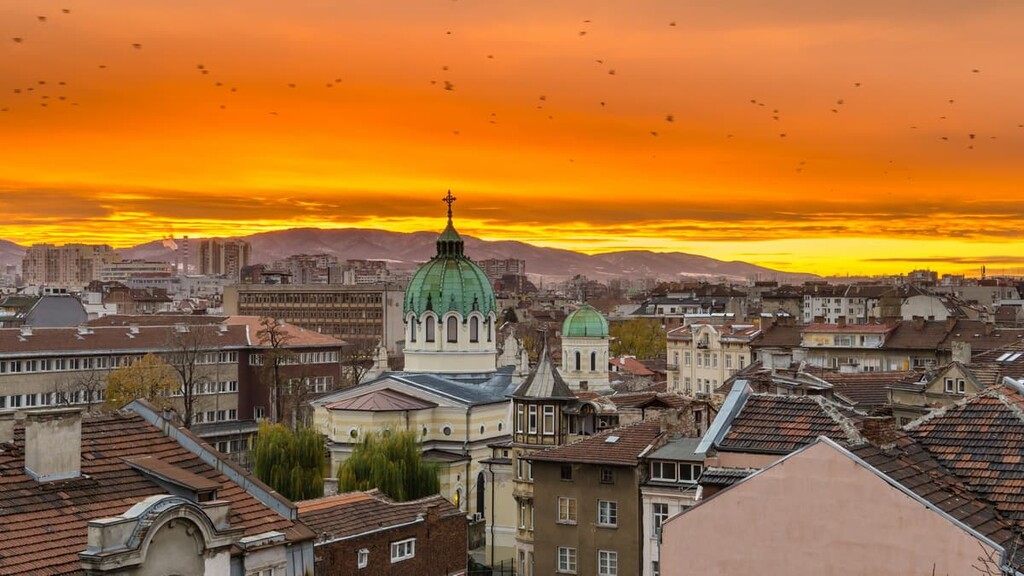
Additionally, the Renaissance-inspired Central Sofia Market Hall is a major center of commerce, teeming with local food, clothes, jewelry, and more, and there are plenty of large, modern malls as well. As a hotspot of tourism in the Balkans, there is no shortage of options when it comes to shopping, lodging, or dining in Sofia.
Public transport within Sofia is extremely thorough, spanning buses, trolley buses, trams, and a metro. Getting to the city is most commonly done either by landing in Sofia Airport, Bulgaria’s main international airport, or taking the train into the Central Railway Station.
With a metropolitan population of around 350,000 people, Plovdiv is the second-largest city of Bulgaria. Likewise it is an incredibly important city, having been a settled polis since the reign of Philip the Great.
Owing to the septet of notable hills that run through the city, which is located in the foothills of the Rhodope Mountains, Plovdiv is sometimes known as the city of 7 hills, much like the famous 7 hills of Rome.
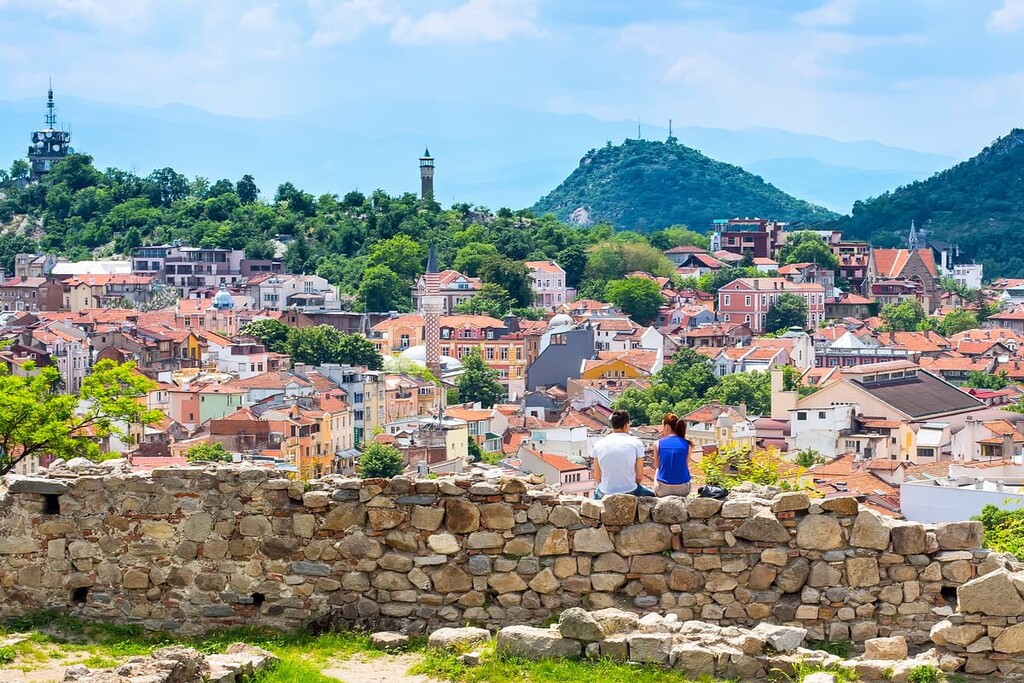
The Roman influence of the city is not just alluded to in nicknames, but can be seen in the very structure of the city. Many of the city’s 200 archaeological sites descend from Roman rule, including a theater, a stadium, and a forum. Other ancient sites include basilicas, Thracian settlements, medieval gates, and the only ancient synagogue of Bulgaria; there are also many architecturally stunning and relatively modern churches, mosques, and synagogues.
Furthermore, the city is home to many notable museums, both for human and natural history, as well as a wonderfully-preserved Old Town where colorful, eccentric, and uniquely Bulgarian buildings characterize a thriving community of cafés, shops, and bakeries. Another popular district is Kapana, known as the creative district, full of hip galleries, bars, local craft shops, and restaurants.
The tourism industry is well established in Plovdiv, with small boutique hotels and familiar chains. In terms of public transportation, Plovdiv can be reached by bus or rail, with an international airport about 5 km (3 mi) from the city, and an extensive bus system runs within the city itself.
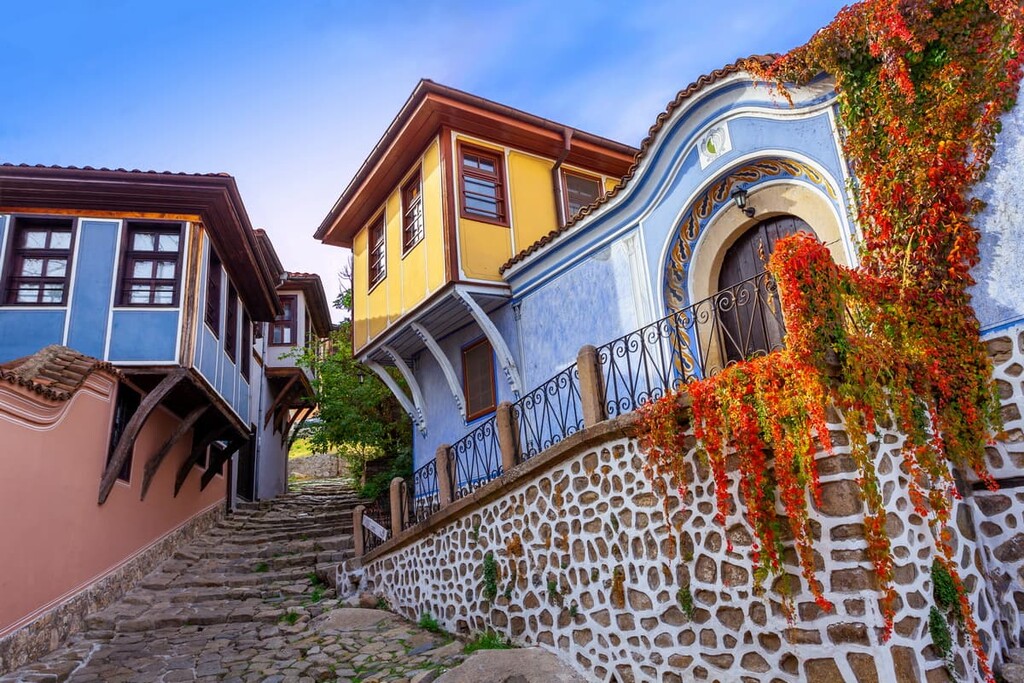
Explore Bulgaria with the PeakVisor 3D Map and identify its summits.

